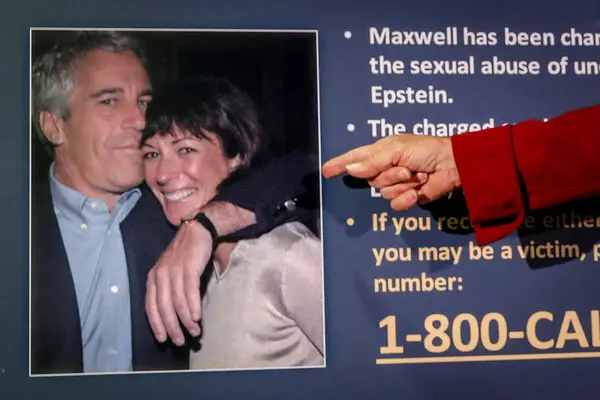Epstein grand jury records sealed is the central outcome of a new ruling by a federal judge in New York. The decision keeps the transcripts hidden from the public, even as the government faces pressure to disclose more information from its investigation into Jeffrey Epstein. The case continues to draw enormous attention because of its ties to power, politics, and public trust in the justice system.
Judge rules against unsealing transcripts
Judge Richard Berman of the Southern District of New York denied the Justice Department’s request to unseal Epstein grand jury transcripts. He explained that the materials in question—about 70 pages—were limited in scope and value. They included two FBI presentations, a short PowerPoint, a call log, and testimony from a single FBI agent.
Berman pointed out that these records added little to the broader understanding of Epstein’s crimes. He called the testimony “mostly hearsay” and emphasized that no victims had testified before the grand jury. Because of this, he concluded that unsealing would not serve the public in a meaningful way.
The judge also stressed that the Department of Justice already has access to over 100,000 pages of investigation files, which contain far more information than the short grand jury presentations. He questioned why the government sought to release the grand jury records instead of disclosing the wider files it already controls.
Why the transcripts matter
The request to release the grand jury transcripts came amid political pressure. Some government officials argued that releasing the material would help restore public confidence and combat accusations of a cover-up. Supporters of transparency said any disclosure was better than none, given Epstein’s connections to powerful figures and the secrecy surrounding his case.
For many, the transcripts symbolized a test of how open the justice system was willing to be. Even though the material itself was limited, the push to unseal it reflected broader frustrations with secrecy around Epstein’s life, his associates, and his death in jail in 2019.
Why the judge kept them sealed
Judge Berman offered several reasons for his decision:
- Protecting victims: More than 1,000 victims have been identified in Epstein’s network. Even the smallest risk of exposure could cause harm.
- Limited usefulness: The sealed material was minimal and largely repetitive of existing documents.
- Respect for grand jury secrecy: Courts rarely break this tradition without compelling justification.
- Government responsibility: The Department of Justice could release other documents it holds, but chose not to, making the focus on the transcripts seem misplaced.
By highlighting these reasons, Berman underscored the balance courts must strike between transparency and privacy.
What the government wanted

The Trump administration directed the Justice Department to request the release of the transcripts. Officials said the move was necessary to fight skepticism that powerful people were being protected. The request came after growing public demands for information, as well as criticism that the justice system was hiding details about Epstein’s network.
However, this was not the first attempt to unseal Epstein-related records. Judges in other cases had already denied similar requests, including one connected to Ghislaine Maxwell’s trial and another in Florida tied to earlier investigations. Each time, the courts cited legal limits and victim safety as key reasons for denial.
What happens next
Although the transcripts will remain sealed, there are other efforts underway to uncover more about Epstein’s crimes and connections.
- Congress has issued subpoenas demanding that the Justice Department turn over all Epstein-related investigation files.
- The Department has agreed to begin sending documents to Congress, starting with initial releases later this week. These documents are expected to include redactions to protect victim identities.
- Ghislaine Maxwell, who was convicted of aiding Epstein in sex trafficking, has appealed her case to the Supreme Court. The outcome of that appeal may also bring new information to light.
These steps show that while the grand jury records are off-limits, there is still momentum toward greater transparency through other channels.
The debate over transparency
The decision to keep the transcripts sealed has sparked mixed reactions. Critics argue that the government’s reluctance to release materials fuels conspiracy theories and erodes trust. They point to the fact that Epstein’s connections to wealthy and influential people remain poorly understood.
On the other hand, supporters of the ruling say protecting victims must come first. They argue that the transcripts add little value, and that broader investigative files—not grand jury notes—are where the real answers lie.
The debate reflects a larger struggle between privacy and accountability. On one side is the belief that openness is essential for justice. On the other side is the concern that exposure could retraumatize victims and compromise ongoing investigations.
The bigger picture
The Epstein case is not just about one man, but about how power, privilege, and secrecy interact in the justice system. Even after Epstein’s death in 2019, the fight over his records has remained intense. Each new court ruling, congressional subpoena, or document release becomes part of a larger story about whether institutions are willing to hold powerful people accountable.
Judge Berman’s ruling does not end that story. Instead, it redirects attention toward the government’s larger trove of files. With Congress now pressing for access, the public may soon learn more about the scope of Epstein’s network and the failures that allowed his crimes to continue for years.
Final thoughts
The sealing of Epstein’s grand jury records shows how complex the balance between transparency and privacy can be. While the transcripts themselves appear limited, the case highlights the importance of full disclosure in restoring public trust.
For now, the spotlight shifts to the Department of Justice and its 100,000 pages of files. Whether those documents will be shared widely—or remain hidden under claims of privacy and secrecy—will determine how much the public truly learns about Jeffrey Epstein, his associates, and the failures of a system that should have stopped him long before 2019.
Do Follow USA Glory On Instagram
Read Next – Elderly White Hippies Slams Sparks Political Firestorm






